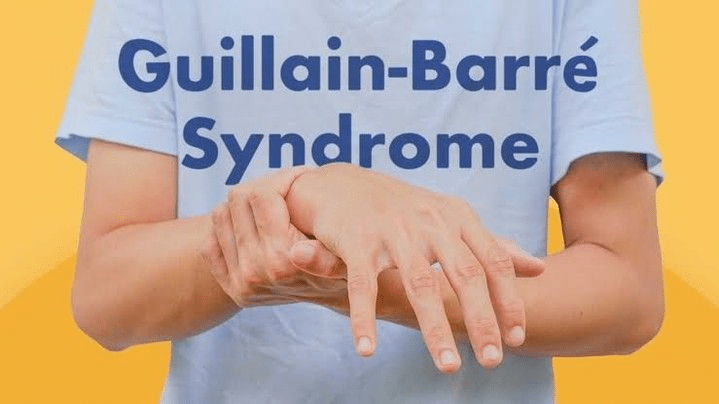Understanding the Recent Guillain-Barré Syndrome Outbreak in Pune

In recent weeks, Pune, a bustling city in western India, has been grappling with a concerning outbreak of Guillain-Barré Syndrome (GBS). This rare neurological disorder has affected around 160 individuals, including a six-year-old boy whose initial symptoms were mistaken for simple frustration over homework. The situation has raised alarms among health officials and the community, especially as five suspected deaths have been reported. This article delves into the details of the outbreak, its causes, and the ongoing response from health authorities.
The Emergence of Guillain-Barré Syndrome in Pune
The outbreak of Guillain-Barré Syndrome in Pune began to draw attention when a school teacher noticed her son struggling to hold a pencil. Initially, she attributed his difficulty to anger over homework. However, within days, the boy’s condition deteriorated rapidly. He was soon in intensive care, unable to move or even breathe without ventilator support. Fortunately, he is now on the path to recovery.
As of now, Pune has reported approximately 160 cases of GBS since January. Among these, 48 patients are currently in intensive care, with 21 requiring ventilators. Tragically, five deaths have been linked to the outbreak. GBS typically starts with tingling or numbness in the extremities, followed by muscle weakness. Symptoms can escalate over two to four weeks, often leading to severe paralysis. The mortality rate for GBS varies between three and 13%, depending on the severity of the case and the quality of healthcare available.
Health experts are investigating the outbreak’s origins, with a particular focus on a pathogen known as Campylobacter jejuni. This bacterium is a leading cause of foodborne infections and has been linked to GBS cases worldwide. Understanding the connection between this pathogen and the recent surge in GBS cases is crucial for controlling the outbreak.
Understanding the Link Between Campylobacter and GBS
The connection between Campylobacter jejuni and Guillain-Barré Syndrome was first established in the 1990s. In rural China, outbreaks of GBS coincided with the presence of this pathogen in local water sources contaminated by poultry droppings. Campylobacter is commonly found in undercooked poultry and can also spread through contaminated water. In Pune, health officials suspect that a specific strain of Campylobacter is responsible for the current outbreak.
Research indicates that about one in 100 Campylobacter strains carry the risk of triggering GBS. When the immune system attacks the bacteria, it can mistakenly target the nerves due to a phenomenon known as molecular mimicry. This occurs when the molecular structure of the bacteria resembles that of human nerve cells. In Pune, experts believe that a strain of Campylobacter with this nerve-like feature is circulating, leading to a higher incidence of GBS cases.
The outbreak in Pune is not an isolated incident. Similar cases have been reported globally, with Peru experiencing over 200 suspected cases and several deaths linked to Campylobacter in 2023. In countries with better hygiene practices, fewer GBS cases are associated with this pathogen, as respiratory infections often play a more significant role. Understanding these patterns is vital for public health responses.
Challenges in Diagnosis and Treatment of GBS
Diagnosing Guillain-Barré Syndrome presents unique challenges. There is no single test for GBS; instead, physicians rely on clinical features and patient history. The symptoms can mimic those of other conditions, such as polio or viral infections, leading to potential misdiagnosis. In rural areas of India, where healthcare resources may be limited, the risk of delayed or incorrect diagnosis is heightened.
Once diagnosed, GBS treatment focuses on managing symptoms and supporting recovery. There is currently no cure for GBS. Physicians often use plasma exchange and intravenous immunoglobulin (IVIG) therapy to reduce the severity of the disease. Plasma exchange filters harmful antibodies from the blood, while IVIG provides therapeutic antibodies to help the immune system.
The recovery process can be lengthy and requires significant medical care. Patients may need rehabilitation to regain strength and mobility. The immune response that triggers GBS can create an “acute neurological tsunami,” leading to extensive damage to the peripheral nervous system. As the immune response subsides, patients still require time and support to heal.
Public Health Response and Community Awareness
In response to the outbreak, health authorities in Pune have ramped up surveillance and public health measures. They have inspected over 60,000 homes and collected water samples for testing. Residents are advised to drink boiled water and consume fresh, properly cooked food to minimize the risk of infection. Health officials are particularly concerned about the consumption of undercooked poultry and contaminated water, which can facilitate the spread of Campylobacter.
The World Health Organization (WHO) is collaborating with local health workers to monitor the situation closely. Their efforts include tracing and testing cases to understand the outbreak’s dynamics better. The goal is to prevent further infections and provide effective treatment to those affected.
Despite the ongoing efforts, uncertainty remains about the outbreak’s exact cause. It is unclear whether large-scale contamination of the water supply or widespread consumption of infected poultry is responsible. Health officials urge the public not to panic but to remain vigilant about food safety and hygiene practices.
Observer Voice is the one stop site for National, International news, Sports, Editor’s Choice, Art/culture contents, Quotes and much more. We also cover historical contents. Historical contents includes World History, Indian History, and what happened today. The website also covers Entertainment across the India and World.

